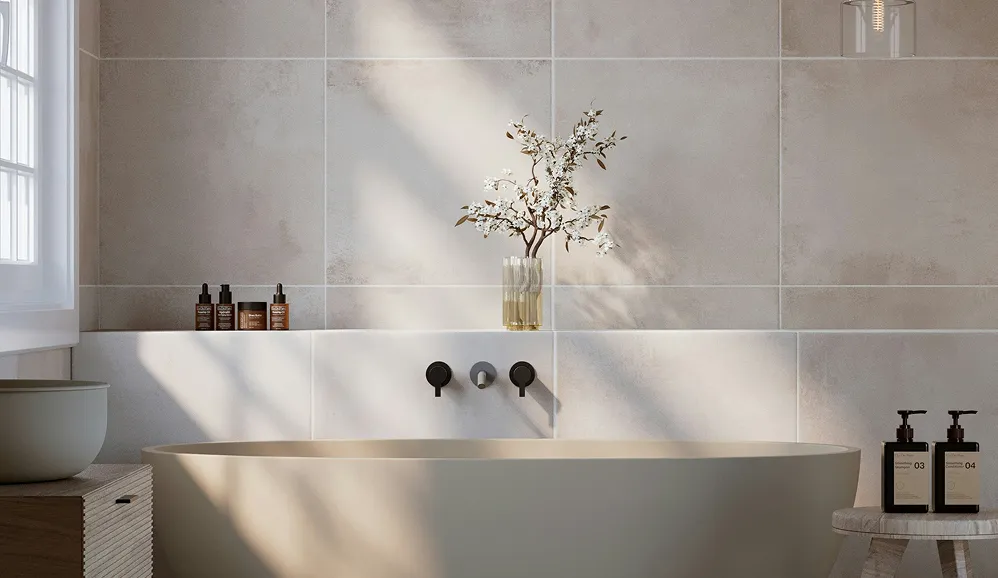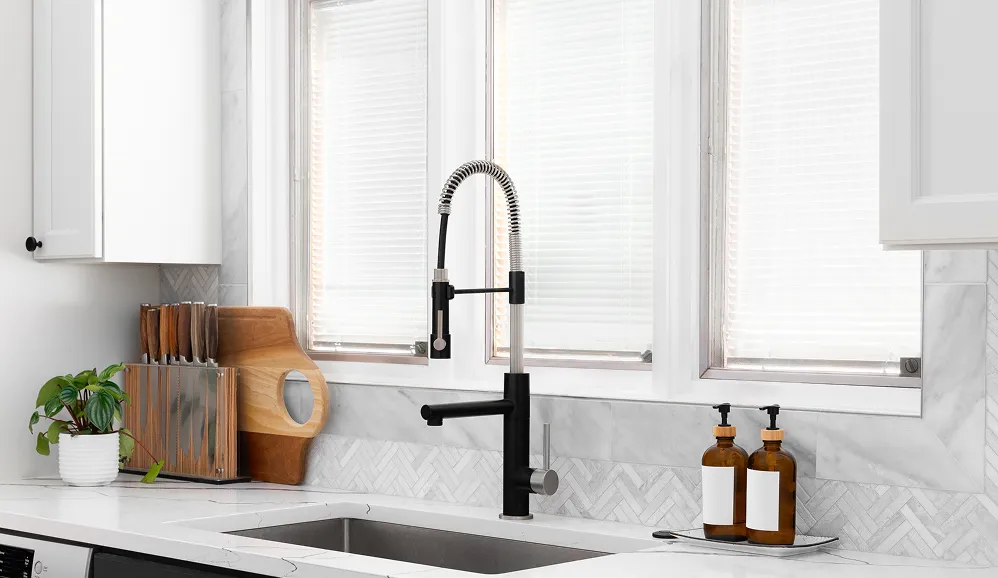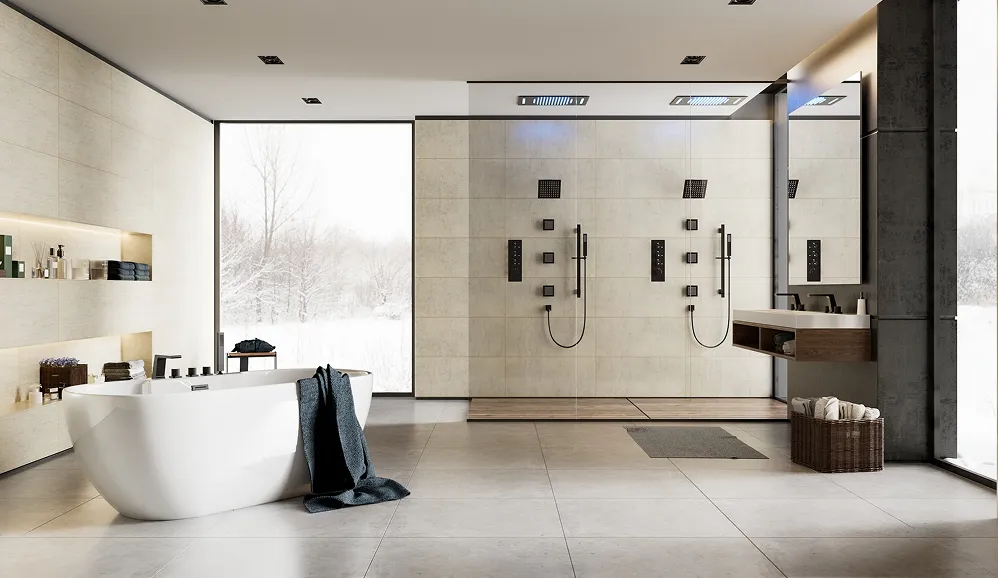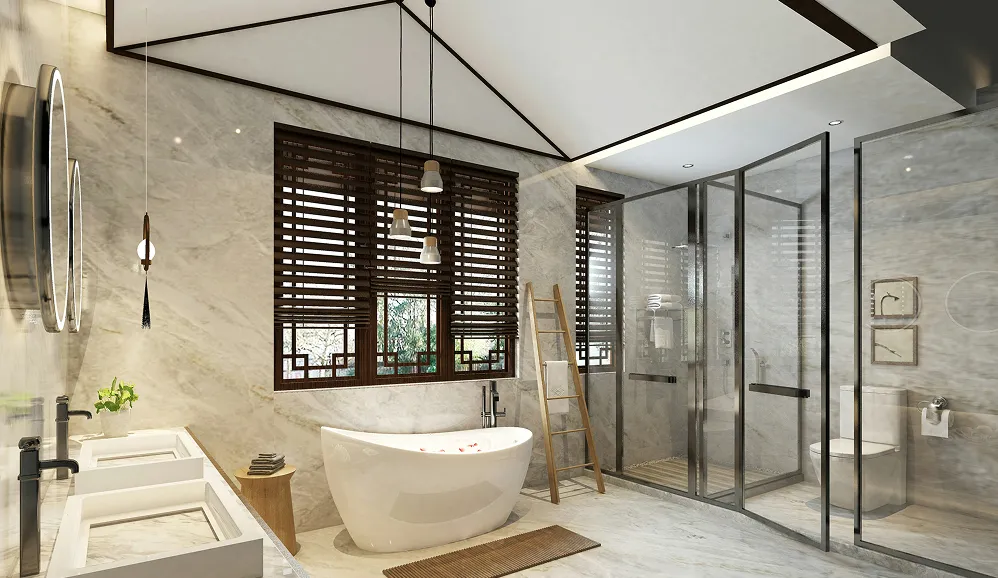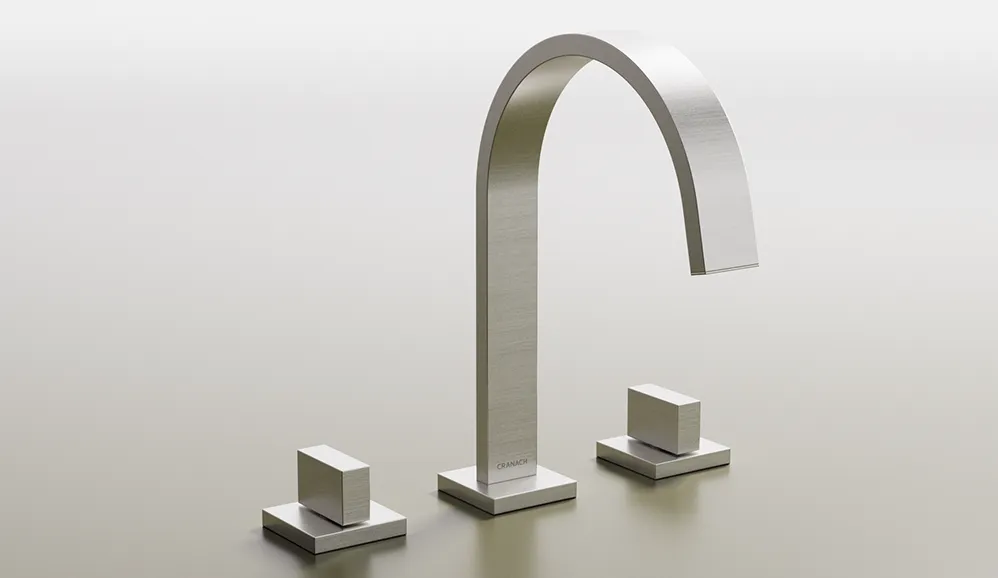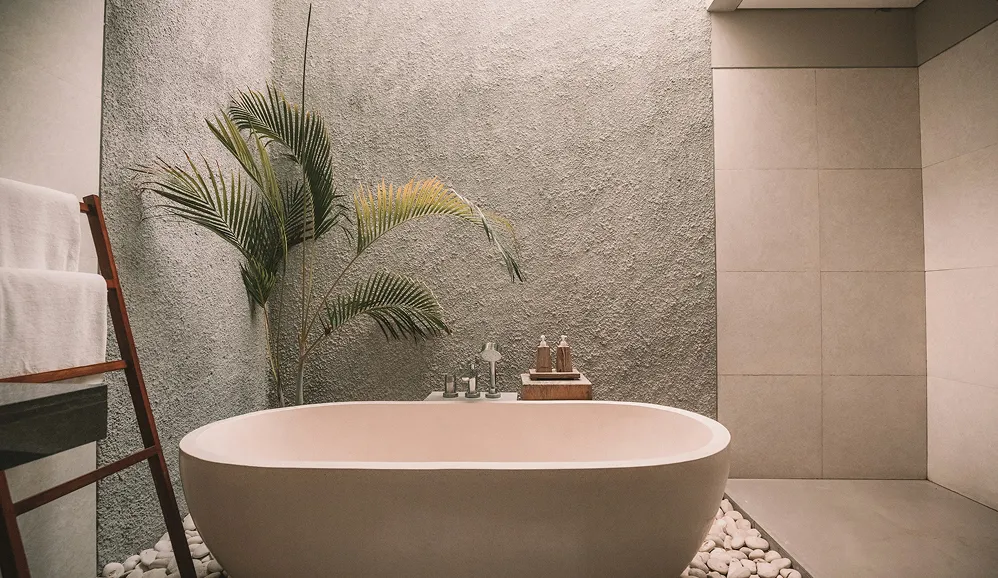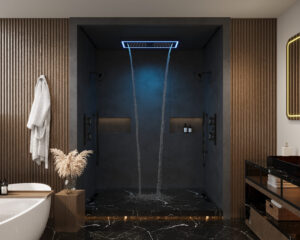Decoding Standard Bathroom Sink Faucet Dimensions

Understanding bathroom sink faucet dimensions is crucial for a successful bathroom renovation. These measurements affect not only the faucet’s fit, but also its functionality and how well it complements your sink and overall bathroom design. Accurate measurements are the first step towards a stress-free installation.
Bathroom sink faucets come in various dimensions that influence their selection and usability. Common faucet types include centerset, widespread, single-hole, and wall-mounted, each with specific measurement requirements. Widespread faucets, for instance, are usually installed in sinks with three holes and have handles spaced 6 to 16 inches apart. Centerset faucets combine the spout and handles into one unit, typically fitting sinks with 4-inch centers.
Key Dimensions to Consider
Beyond the basic faucet type, several key dimensions require attention. These ensure your faucet fits and functions optimally in your bathroom. A spout that’s too short, for example, can make handwashing difficult.
- Centerset Measurement: This is the distance between the hot and cold water inlets on a centerset faucet. This measurement is usually 4 inches. This standardization simplifies replacing centerset faucets.
- Spout Height: Spout height is the vertical distance from the faucet base to the spout opening. It affects both the look and practicality of the faucet. A higher spout provides more clearance, but may cause splashing.
- Spout Reach: This measures how far the spout extends horizontally from the faucet base. This ensures water flows directly into the sink, minimizing splashes. A longer reach is better for larger sinks.
Understanding the Impact of Dimensions
Choosing the right dimensions creates a balance of form and function. These seemingly small measurements can significantly impact your bathroom experience. For instance, a faucet with insufficient reach can result in water spilling onto the countertop.
- Functionality: Proper dimensions ensure comfortable use. A spout that’s too low or a reach that’s too short can make using the faucet awkward and messy.
- Aesthetics: Faucet dimensions contribute to the overall visual balance of your bathroom. A well-proportioned faucet complements the sink and counter, creating a cohesive design.
- Installation Compatibility: Taking accurate measurements prevents installation issues. The correct dimensions ensure a smooth and trouble-free installation process.
By understanding these dimensions, you can select a bathroom sink faucet that enhances your space and daily routine. Careful planning ensures a faucet that not only looks great but also functions seamlessly. In the next section, we’ll explore different faucet types and their specific dimensional requirements.
Choosing the Perfect Faucet Type for Your Space
The right bathroom sink faucet can truly elevate your space. It moves beyond simple function and adds a touch of style. This means understanding the different types of faucets available and their specific needs. Centerset, widespread, single-hole, and wall-mounted faucets all have unique dimensions. These dimensions are key to finding the perfect fit for your bathroom sink. When choosing a faucet, think about how it will work with your current – or future – cabinetry. Faucet Types and Their Dimensions
Finding the perfect faucet involves understanding each type and how its size interacts with your sink and countertop. Here’s a closer look:
- Centerset Faucets: These compact faucets combine the spout and handles. They usually fit sinks with 4-inch center holes. Their sleek design makes them perfect for smaller bathrooms, maximizing space and simplifying installation.
- Widespread Faucets: Widespread faucets offer more design flexibility. The handles and spout are separate, usually spaced 6 to 16 inches apart. This adaptable style works well with larger sinks and vanities, allowing for a more customized and visually striking look.
- Single-Hole Faucets: These faucets require just one hole for installation, making them incredibly versatile and easy to install. They complement a variety of sink styles and are known for their clean, modern appearance. This simplicity contributes to a minimalist aesthetic.
- Wall-Mounted Faucets: Mounted directly to the wall, these faucets offer a unique, contemporary feel. They also free up valuable counter space. However, they do require careful planning during the construction or remodeling phase. This distinctive style adds a bold design element while maximizing your counter area.
To help visualize the key dimensional differences between these faucet types, take a look at the table below:
Bathroom Faucet Types: Dimensional Comparison
Comparison of different bathroom faucet types with their standard dimensions and installation requirements
| Faucet Type | Center-to-Center Distance | Standard Height | Typical Reach | Required Holes |
|---|---|---|---|---|
| Centerset | 4 inches | 4-6 inches | 4-5 inches | 3 |
| Widespread | 6-16 inches | 4-8 inches | 5-8 inches | 3 |
| Single-Hole | N/A | Varies widely | Varies widely | 1 |
| Wall-Mounted | N/A | Varies widely | Varies widely | 2 (for water supply) |
As you can see, the various faucet types offer a range of dimensions to suit different bathroom layouts and sink sizes. Choosing the right type is crucial for both aesthetics and functionality.
Matching Faucets to Bathroom Styles
Design professionals often pair specific faucet dimensions with particular bathroom styles. This creates a cohesive and visually appealing space. A large, widespread faucet can overwhelm a small powder room. A compact centerset faucet might look too small in a spacious master bath.
A sleek, minimalist bathroom often looks best with a single-hole or wall-mounted faucet. These styles emphasize clean lines and an uncluttered look. A more traditional bathroom might be enhanced by a widespread faucet with decorative handles. This reflects a classic, elegant style.
The faucet’s spout height and reach are also important, especially in relation to the sink’s depth. A high-arc spout with a shallow sink might cause splashing. A low-arc spout with a deep sink can make handwashing awkward. Learn more in our article about different faucet finishes and their impact on design.
Special Considerations for Vessel Sinks and Wall-Mounted Options
Vessel sinks sit on top of the counter and need specific faucet dimensions to accommodate their height. Wall-mounted faucets also require careful planning. Their installation involves precise measurements to ensure the spout and handles align perfectly with the sink basin. Both styles demand attention to spout height and reach. This prevents splashing and ensures comfortable use. These special considerations highlight how bathroom sink faucet dimensions affect the overall functionality and design of your bathroom.
Mastering Spout Height and Reach Measurements
Choosing the right bathroom sink faucet can make all the difference. Two crucial factors often determine whether your new faucet is a dream or a disaster: spout height and spout reach. These dimensions significantly impact both how well your faucet works and your overall experience using it. A spout height that’s off can lead to annoying splashing, and a reach that’s too short or too long makes even simple handwashing a hassle.
Understanding Spout Height
Spout height is the vertical distance between the base of the faucet and the spout opening. This measurement determines the amount of space you have under the faucet. It’s a key factor in how easily you can wash your hands, fill containers, and handle other everyday tasks.
A shorter spout height might work well for smaller sinks and compact bathrooms. It can minimize splashing, but it might also limit how you can use the sink. On the other hand, a taller spout offers more clearance. However, it could cause excessive splashing if paired with a shallow sink.
Exploring Spout Reach
Spout reach is the horizontal distance the spout extends from the faucet base. This measurement controls where the water stream falls in the sink basin, playing a crucial role in preventing water from splashing onto your countertop.
A longer reach helps ensure water flows directly into the sink, even with larger basins. But, a spout reach that’s too long can interfere with the back of the sink. It can also cause the water to hit the drain too hard, creating unwanted backsplash. You might be interested in: How to master different faucet designs.
Finding the Perfect Balance
The best spout height and reach for your bathroom depends on several factors, including your sink depth, counter width, and even your height. A deeper sink usually pairs well with a higher spout. A shallow sink, on the other hand, typically benefits from a lower spout to minimize splashing.
If you have a wider counter, you might need a faucet with a greater reach. This ensures the water flows comfortably into the sink basin without overshooting. Before you buy, try to visualize how different dimensions will work within your bathroom. Picture the arc of the water and how it interacts with your sink’s depth and shape. Thinking ahead can help you avoid costly mistakes and ensure a pleasant user experience.
Balancing Water Efficiency with Perfect Dimensions
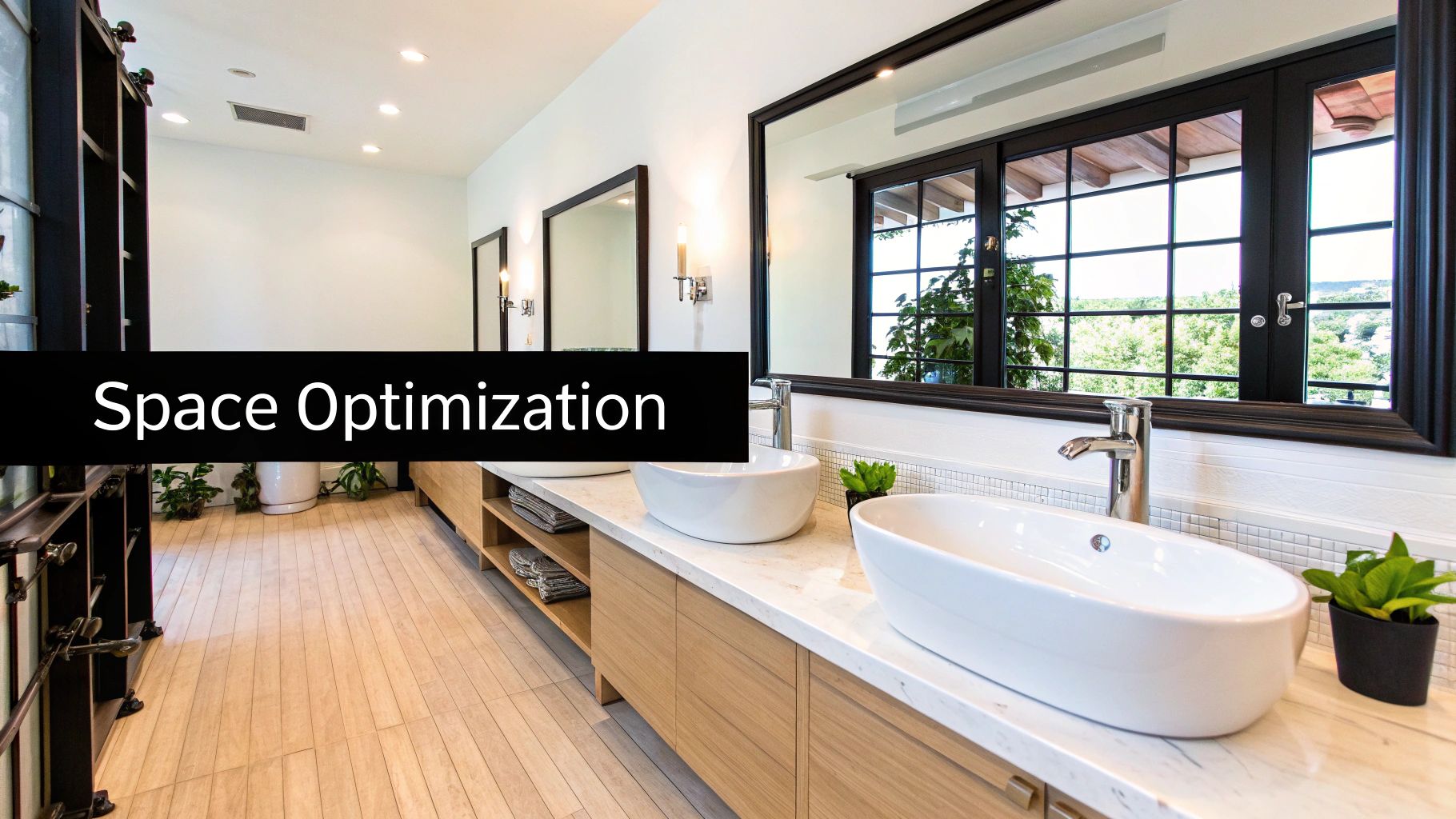
Today’s bathroom sink faucets are designed with both style and water conservation in mind. Manufacturers are constantly seeking new ways to merge beautiful aesthetics with responsible water usage. This involves a fresh look at the internal workings of faucets to ensure sufficient water pressure while adhering to stricter water conservation regulations. Even seemingly small adjustments to faucet dimensions can significantly impact overall water efficiency.
The Rise of Efficient Faucet Design
The emergence of WaterSense labeled faucets represents a major change in how we view bathroom fixtures. Created by the Environmental Protection Agency (EPA), this program encourages water conservation through thoughtful design. WaterSense faucets have a maximum flow rate of 1.5 gallons per minute (GPM). This is a considerable decrease from older models, which often flowed at 3 to 7 GPM, representing a water usage reduction of over 30%. This change requires manufacturers to carefully consider bathroom sink faucet dimensions to maintain performance while minimizing water consumption.
The Role of Flow Restrictors and Aerators
To achieve these lower flow rates, manufacturers utilize flow restrictors and aerators. Flow restrictors control the volume of water flowing through the faucet. Aerators infuse air into the water stream, maintaining a sense of robust pressure while using less water. These small components have a substantial impact on a faucet’s overall efficiency.
However, simply incorporating these elements isn’t sufficient. Careful consideration of faucet dimensions is crucial for these features to function optimally. For example, both spout shape and internal chamber design significantly influence the delivery of the aerated water stream. For more information, see this helpful resource: How to master selecting a faucet with the appropriate water flow rate.
Identifying Efficient Faucets Through Dimensions
While flow restrictors and aerators aren’t visible externally, certain dimensional cues can suggest a faucet’s efficiency. A slightly narrower spout opening, for example, might indicate the presence of a flow restrictor. This doesn’t automatically translate to weaker water pressure. The spout’s shape, working in conjunction with the aerator, can still produce a strong, satisfying flow. The angle and overall spout design also contribute to the water trajectory, maximizing its effectiveness and minimizing splash.
Taking Perfect Measurements for Flawless Installation
Measuring for a new bathroom faucet doesn’t have to be intimidating. Accurate measurements are the key to a smooth installation, preventing frustration and unnecessary trips back to the hardware store. This guide, drawing on advice from plumbing professionals, will walk you through the essential steps for getting it right the first time.
Essential Tools for Accurate Measurement
Having the right tools is just as important for plumbing as it is for cooking. A tape measure, preferably metal for accuracy, is your go-to for most measurements. For precise sink hole diameters, calipers are invaluable. Calipers provide incredibly precise measurements, down to fractions of an inch, ensuring compatibility between your sink and faucet. A level is also important for ensuring your faucet is installed perfectly straight, affecting both the look and functionality.
Measuring for Different Faucet Types
Different faucet types require different measurements. For centerset faucets, measure the distance between the centers of the hot and cold water lines, usually a standard 4 inches. Widespread faucets offer design flexibility and require measuring the distance between the centers of all three holes. The outer holes, intended for the handles, are typically spaced between 6 and 16 inches apart. For single-hole faucets, the crucial measurement is the diameter of the existing sink hole. For more installation advice, check out this helpful resource: How to master faucet installation. Finally, wall-mounted faucets require measuring the distance between the water supply lines and the desired faucet height.
Crucial Measurements Beyond the Faucet
Don’t forget to consider measurements beyond just the faucet itself. The sink depth, from the rim to the bottom of the basin, influences spout height and splash. Countertop thickness is crucial for selecting the right mounting hardware length. Backsplash clearance, if applicable, is important to avoid interference between the faucet and the wall. Finally, adequate clearance between the spout and any overhead cabinets or mirrors is essential. These often overlooked measurements are key for a successful installation.
Before diving into installation, take a moment to review the key measurements needed for your bathroom faucet. The following table outlines these critical dimensions and explains their importance.
Measurement Checklist for Bathroom Faucet Installation: Essential measurements to take before purchasing a bathroom sink faucet
| Measurement Type | How to Measure | Why It Matters | Common Mistakes |
|---|---|---|---|
| Sink Holes (Centerset) | Center-to-center distance between hot and cold inlets | Determines faucet compatibility | Mismeasuring and purchasing the wrong size faucet |
| Sink Holes (Widespread) | Center-to-center distance between all three holes | Ensures correct handle and spout placement | Inaccurate measurements resulting in misaligned handles and spout |
| Spout Height | From the base of the faucet to the spout opening | Affects clearance and splash potential | Choosing a spout height that is either too high, causing excessive splashing, or too low, making it impractical for use |
| Spout Reach | Horizontal distance from the faucet base to the spout tip | Determines water flow into the sink | A spout reach that is too short can lead to water spilling onto the countertop, while one that is too long can hit the back of the sink |
| Sink Depth | From the rim to the bottom of the basin | Influences spout height choice | Not considering sink depth can result in a spout height that causes excessive splashing |
| Countertop Thickness | Measure the thickness of the countertop material | Affects mounting hardware length | Using incorrect mounting hardware length due to inaccurate countertop thickness measurement can prevent proper installation |
| Backsplash/Wall Clearance | Distance from the back of the faucet to the wall | Prevents interference with the wall | Insufficient clearance can restrict handle movement and make faucet operation difficult |
| Cabinet/Mirror Clearance | Distance from the spout to any overhead obstructions | Ensures enough space for comfortable use | Inadequate clearance can limit access to the sink and potentially damage overhead fixtures |
Taking accurate measurements and using this checklist will avoid common installation pitfalls. This preparation ensures a bathroom that’s both beautiful and functional.
Emerging Trends Reshaping Bathroom Sink Faucet Dimensions
The world of bathroom design is constantly evolving, and bathroom sink faucets are no exception. New technologies and shifting consumer preferences are driving innovation in faucet design and functionality. These changes influence everything from the materials used to the integration of smart home technology. Understanding these emerging trends is key to selecting a faucet that’s both stylish and enduring.
Touchless Technology and Integration
One significant trend is the rise of touchless technology. These faucets use sensors to activate water flow, improving both hygiene and convenience. This shift towards touchless operation requires adjustments in faucet dimensions, particularly concerning sensor placement and internal components. Some touchless faucets, for example, need slightly larger base plates to accommodate the sensors and control modules. The spout design itself often features optimized water flow for touchless activation, such as precise aerators and streamlined internal channels.
LED Integration and Miniaturization
Integrated LED lights are another popular feature. These lights can indicate water temperature, enhance the ambiance, or even act as a night light. Adding LEDs requires manufacturers to rethink internal space allocation. They also influence the faucet’s exterior dimensions, sometimes requiring slightly larger spouts or handle bases. However, miniaturization allows designers to seamlessly integrate these features without significantly changing the overall faucet size. Curious about different faucet types? Check out this helpful resource: How to master selecting different faucet categories.
Smart Home Integration and Internal Components
Smart home integration is transforming bathroom faucets. Some models offer remote control via smartphone apps, enabling users to adjust water temperature and flow. This functionality requires internal components like Wi-Fi modules and microcontrollers, impacting the dimensions of the faucet body and requiring clever space management within the faucet design. Accurate measurements are essential during bathroom renovations. Here’s a helpful guide: measuring for installation.
Material Innovations and Design Possibilities
New materials are expanding design possibilities for bathroom sink faucets. Ultra-thin profiles and dramatic shapes, once structurally impossible, are now becoming a reality thanks to advancements in materials science. For example, durable, lightweight composites allow for thinner spouts and handles without sacrificing strength. Importantly, faucet manufacturers are increasingly adopting standardized flow rates due to environmental regulations. As of 2025, many faucets operate at a maximum flow rate of 1.2 to 1.5 gallons per minute (GPM), a considerable reduction from the pre-1992 average of 3 to 7 GPM. This reflects a growing emphasis on water efficiency in response to global water scarcity, highlighting the importance of faucet dimensions in both functionality and sustainability.
By understanding these emerging trends, you can choose a bathroom sink faucet that balances modern innovation with timeless design, ensuring your bathroom remains stylish and functional for years to come. Looking to upgrade? Explore a wide selection of bathroom and kitchen faucets at Cranach bath and kitchen.

